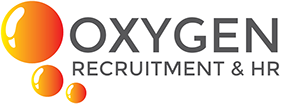Creating your first resume
If you have never had to provide a formal resume you may be wondering, “where should I start?” Whether you are a young person looking for your first professional role, or simply putting together a resume for the first time, these tips can help you get started and put your best professional self forward.
Which template should I use?
It’s fair to say that we see a lot of resumes at Oxygen Recruitment & HR . While there are plenty of free resume templates available online, we recommend choosing a layout that is easy to read above all else. In practical terms this means plenty of white space, clear subheadings and information presented using bullet points.
A traditional resume includes fields for past experience, education, skills or achievements and contact information. If it feels appropriate for the company you are applying to you can consider including a ‘mission statement’. This is a brief statement (a few lines at most) that speaks to your career objectives and the types of roles you are interested in.
Overly complicated resumes won’t impress busy hiring managers who want to be able to scan for relevant details as quickly as possible. However, if you are looking to enter a creative field you definitely have an opportunity to showcase your design skills, as long as you are also communicating important information about yourself, your skills and your experience.
Finding the right advice
The amount of information at your fingertips can be overwhelming. If you are applying for a role with the help of Oxygen Recruitment & HR we can give you specific advice on structuring your resume for that particular role. Your university or TAFE will also have trustworthy resources for job seekers and having a look at the resumes and Linkedin profiles of people with career trajectories you admire is also a good starting point.
Editing and sending
Paying close attention to spelling and grammar is critical when preparing a resume. There is no point in listing “attention to detail” as one of your key skills if your resume contains careless errors. Always get a trusted friend or family member to proofread, and be aware that your computer’s built in spell checker might be set to US instead of Australian/UK spelling.
You might love working on your Mac, or using Google Docs but don’t forget to export your resume as a PDF. Many job application platforms use automated processing and providing a PDF file ensures your document is not corrupted. Before you hit send – double check the file name does not include ‘draft’, ‘Mum’s edits’ or ‘version 12’. Your name and date is sufficient.
Basic Dos and Don’ts
- Do include your suburb or city – it let’s employers know which locations may be suitable for you.
- Do include part-time or vacation work you have done, even if you are now looking for a different type of role. Highlight the transferable skills that you acquired and demonstrate how your personal attributes contributed to your success.
- Do include hobbies that give an employer insight into your interests, or that demonstrate leadership potential but, don’t include interests that might be polarising.
- Do include your involvement in school or community groups and any academic or sporting achievements that speak to your qualities as a potential employee.
- Do stick to a word limit. Your first resume should not be more than two pages long.
- Don’t include a photo (unless specifically asked to do so).
- Don’t forget to do a social media audit for job seekers. Your resume is just one component of a job application and if you are entering professional employment for the first time, a hiring manager will assess your application with this in mind. Focus on what you have to offer a potential employer and possibly seek advice from the company or from your recruiter.
